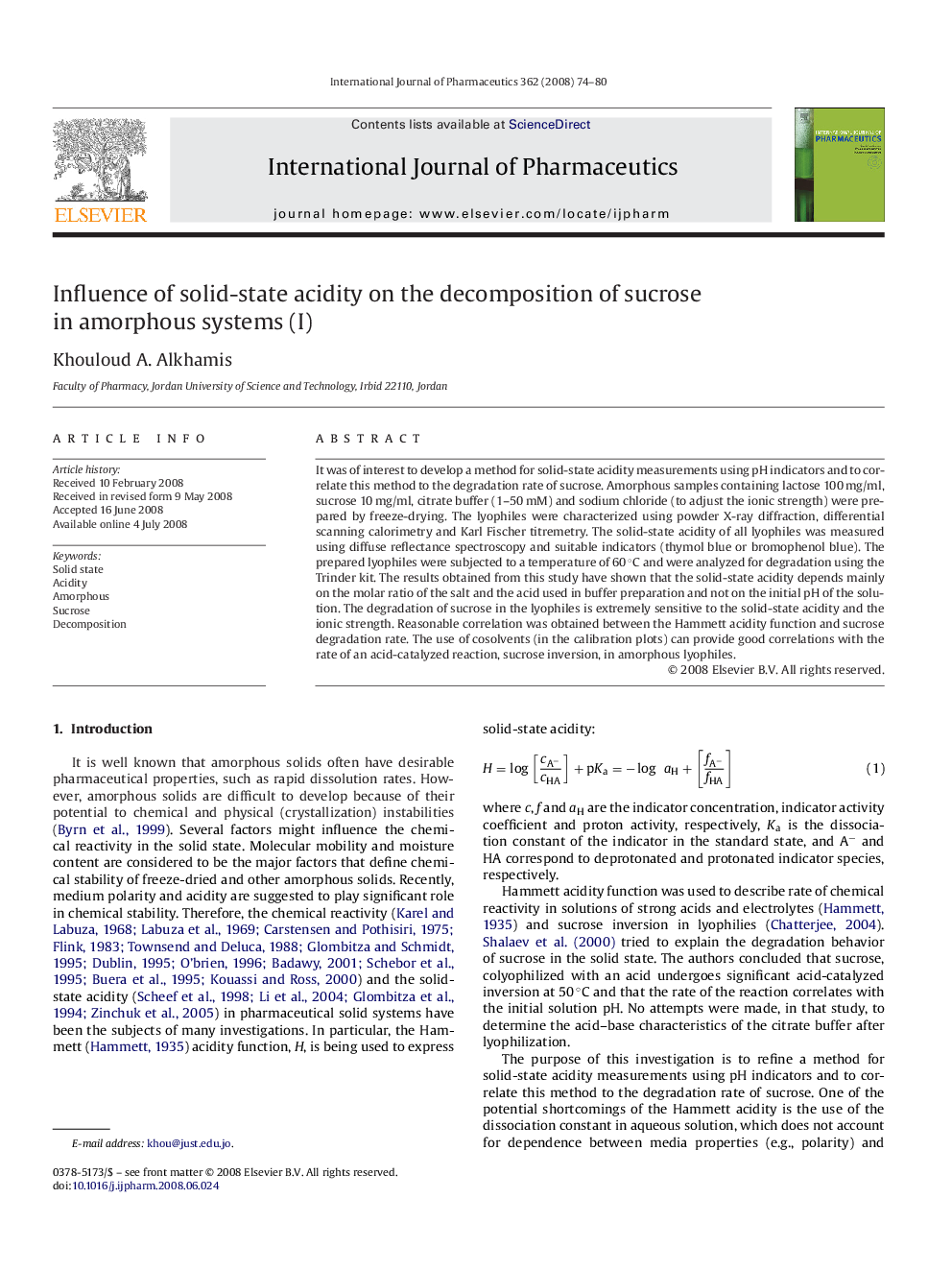| Article ID | Journal | Published Year | Pages | File Type |
|---|---|---|---|---|
| 2505131 | International Journal of Pharmaceutics | 2008 | 7 Pages |
It was of interest to develop a method for solid-state acidity measurements using pH indicators and to correlate this method to the degradation rate of sucrose. Amorphous samples containing lactose 100 mg/ml, sucrose 10 mg/ml, citrate buffer (1–50 mM) and sodium chloride (to adjust the ionic strength) were prepared by freeze-drying. The lyophiles were characterized using powder X-ray diffraction, differential scanning calorimetry and Karl Fischer titremetry. The solid-state acidity of all lyophiles was measured using diffuse reflectance spectroscopy and suitable indicators (thymol blue or bromophenol blue). The prepared lyophiles were subjected to a temperature of 60 °C and were analyzed for degradation using the Trinder kit. The results obtained from this study have shown that the solid-state acidity depends mainly on the molar ratio of the salt and the acid used in buffer preparation and not on the initial pH of the solution. The degradation of sucrose in the lyophiles is extremely sensitive to the solid-state acidity and the ionic strength. Reasonable correlation was obtained between the Hammett acidity function and sucrose degradation rate. The use of cosolvents (in the calibration plots) can provide good correlations with the rate of an acid-catalyzed reaction, sucrose inversion, in amorphous lyophiles.
